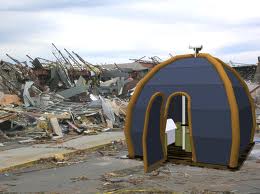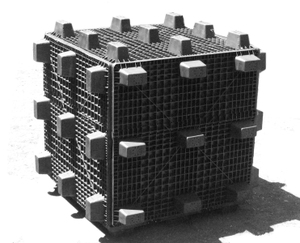The D Center Conversation held at the Windup Space featured three speakers doing their part in making Baltimore and the surrounding areas more sustainable, resilient, and adaptive to the ever changing landscape. The speakers included Lindsay Brugger of the DC Chapter of Architecture for Humanity, Alice Kennedy from the Baltimore City office of Sustainability, and Jonathan Erwin Deutsch Social Design Fellow at MICA Department of Social Design. Each speaker touched on issues effecting the community such as designs place in organized inoculation planning, disaster recovery, and improving communication of the areas citizens. As shown in the presentations, designers are adapting a new outlook of what design is and how it is defined as well as including how to create sustainability and resilience when facing design conundrums. To gain a further understanding of these 3 buzz words lets start with the definitions: What is?
Sustainability;able to be used without being completely used up or destroyed
Resilience;the ability to become strong, healthy, or successful again after something bad happens
Adaptation;adjustment to environmental conditions Below is a pretty popular chart of what designers must think of when creating.
If you are a design yokel like me your already possibly lost. You understand the go green concept but it can get overwhelming and it is asked what else can you do? Of course consume less, plant more, conserve, but also Pay Attention To Smart Design. It works like voting. When we the community (social), thru our purchases( economics), buy products that are sustainable, resilient, and adaptable, our environment reaps the reward. We are going to shop, but lets shop right.
Sustainable
Computers are known for the harsh impact on the environment. They are distractive from construction to disposal and while in use create a large carbon footprint. For the Greener Gadget Design Competition Brenden Macaluso made the lifecycle of the PC more sustainable. The computer is made from un die-cut cardboard held together with non toxic white glue. It reduced labor, processed materials, and made it more recyclable at the end of its use.
Panasonic has designed a LED Clear Bulb recreates the mood and look of incandescents light bulbs while offering a rated lifespan of 40,000 hours. The light resembles a filament and light goes in all direction but it boost a lifespan of 40,000. It won the Sustainability Award at the International Design Excellence Awards. Since it has the same dimensions as an incandescent, the LED Clear Bulb can be used with any light fixture that uses an incandescent.
Resilient
Featured on Wired website the “Life Cube” from Inflatable World conatins a 12 foot structure that resembles a bouncy house. It cost around 3,900 dollars and provides shelter and amenities for people for weeks after a disaster. The cube can be dropped to a location within 72 hours and it has a bed, a couch, freeze-dried food, a 50-gallon water bladder, a first-aid kit, a radio and a cookstove.
 The Lifestraw is a water filter that is small, portable, and removes all waterborne bacteria and parasites. You place the straw in the water and simply suck. The filters within the straw iodine and textiles that kill the bacteria and improve the taste of the water. They are 88 Us dollars but the clean water they provide invaluable.
The Lifestraw is a water filter that is small, portable, and removes all waterborne bacteria and parasites. You place the straw in the water and simply suck. The filters within the straw iodine and textiles that kill the bacteria and improve the taste of the water. They are 88 Us dollars but the clean water they provide invaluable.
Adaptation
In Singapore a 26 floor skyscraper will be built entirely of recycled material. The energy used in the building will be provided by solar panels and human sewage that produces biogas. The walls will be adjustable providing room needed if space gets tight due to the fact that half the surface will be flora with the expectation of growth. Named EDITT (Ecological Design In The Tropics) it is the idea of a inhabitable feral building.
This plan for a “net -zero” building features self sufficient energy generating technology that cuts down on usage and pollution.The biggest challenge of net-zero buildings, especially for smaller builders, is the pricey initial construction cost. Though the cost to build is 10% higher the yielded longterm energy recuperation reimburse the initial cost .Naomi Porat, Zeta’s CEO of Net Zero building stated, “ it could change forever the way we think about buildings as great energy consumers, to [thinking about them as] great energy producers.”
Cites
Mienhold, Bridgettte. Recompute: Sustainable Desktop Computer. Inhabitat/ Technology. Posted 02/16/09. Accessed April 6,2014.http://inhabitat.com/recompute-by-brenden-macaluso/
“2014 Quick Facts.” Loading Dock. Accessed April 6,2014.http://www.loadingdock.org/inventory_art/index.html
Ozler, Levent. “Best in Show of the 2012 International Design Excellence Awards.” Dexinger. Posted August 27, 2012. Accessed April 6, 2014.http://www.dexigner.com/news/25546
Madrigal, Alexis.” Tricked- Out Inflatable House Provides “Instant Survival.” Wired. Posted 11/7/08. Accessed April 8, 2014.http://www.wired.com/2008/11/inflatable-hous/
“ 5 Green buildings design for the future of farming.” Green Dairy. Accessed April 8, 2014.http://www.greendiary.com/5-green-building-designs-future-farming.html
McQuilken, Alex. “ The Future Of Building Is Net Zero.” Green Real Estate Investing News. Posted Sep 19, 2010. Accessed April 8, 2014.http://www.greenrealestateinvestingnews.com/green-real-estate-investing/the-future-of-building-is-net-zero.html







